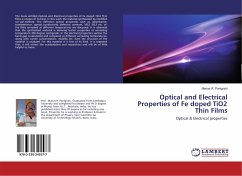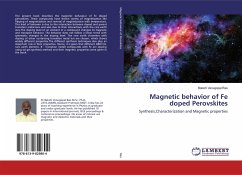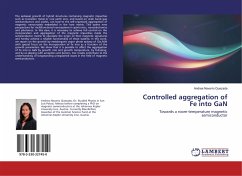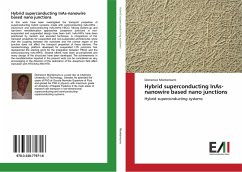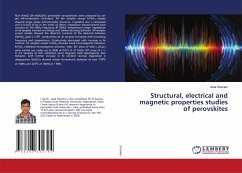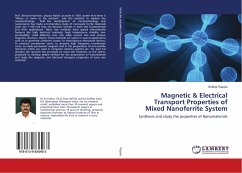
Magnetic properties of Fe nanowire
The effects of frequency, voltage and acidity on Fe nanowires
Versandkostenfrei!
Versandfertig in 6-10 Tagen
39,99 €
inkl. MwSt.

PAYBACK Punkte
20 °P sammeln!
One-dimensional nanostructures are of great interest because of their potential application in many areas, such as high-density perpendicular magnetic recording media and nanosensors. The synthesis and precise control of such a magnetic nanostructure on a large scale is a challenging issue in material science. One strategy is to electrode posit magnetic nanowires into nanochannels of porous anodic aluminum oxide (AAO) templates. In this work we focused on Fe-nanowire arrays with diameters of about 30 nm, using the shape anisotropy and the crystalline anisotropy. In the present paper, we report...
One-dimensional nanostructures are of great interest because of their potential application in many areas, such as high-density perpendicular magnetic recording media and nanosensors. The synthesis and precise control of such a magnetic nanostructure on a large scale is a challenging issue in material science. One strategy is to electrode posit magnetic nanowires into nanochannels of porous anodic aluminum oxide (AAO) templates. In this work we focused on Fe-nanowire arrays with diameters of about 30 nm, using the shape anisotropy and the crystalline anisotropy. In the present paper, we report a unique dynamically controlled growth method to prepare Fe nanowire with preferred (110) orientation along the wire. The effects of pH, symmetry/asymmetry electrodeposition voltage and frequency on magnetic properties of nenowires were investigated. Computing the samples magnetization proved that by increasing the non symmetric voltage, magnetization of nanowires increased. On the other hand, the values of coercive field and squareness of samples showed that 1000 Hz is the optimum system frequency which reveals special properties of Fe nanowires discussed in this book.



